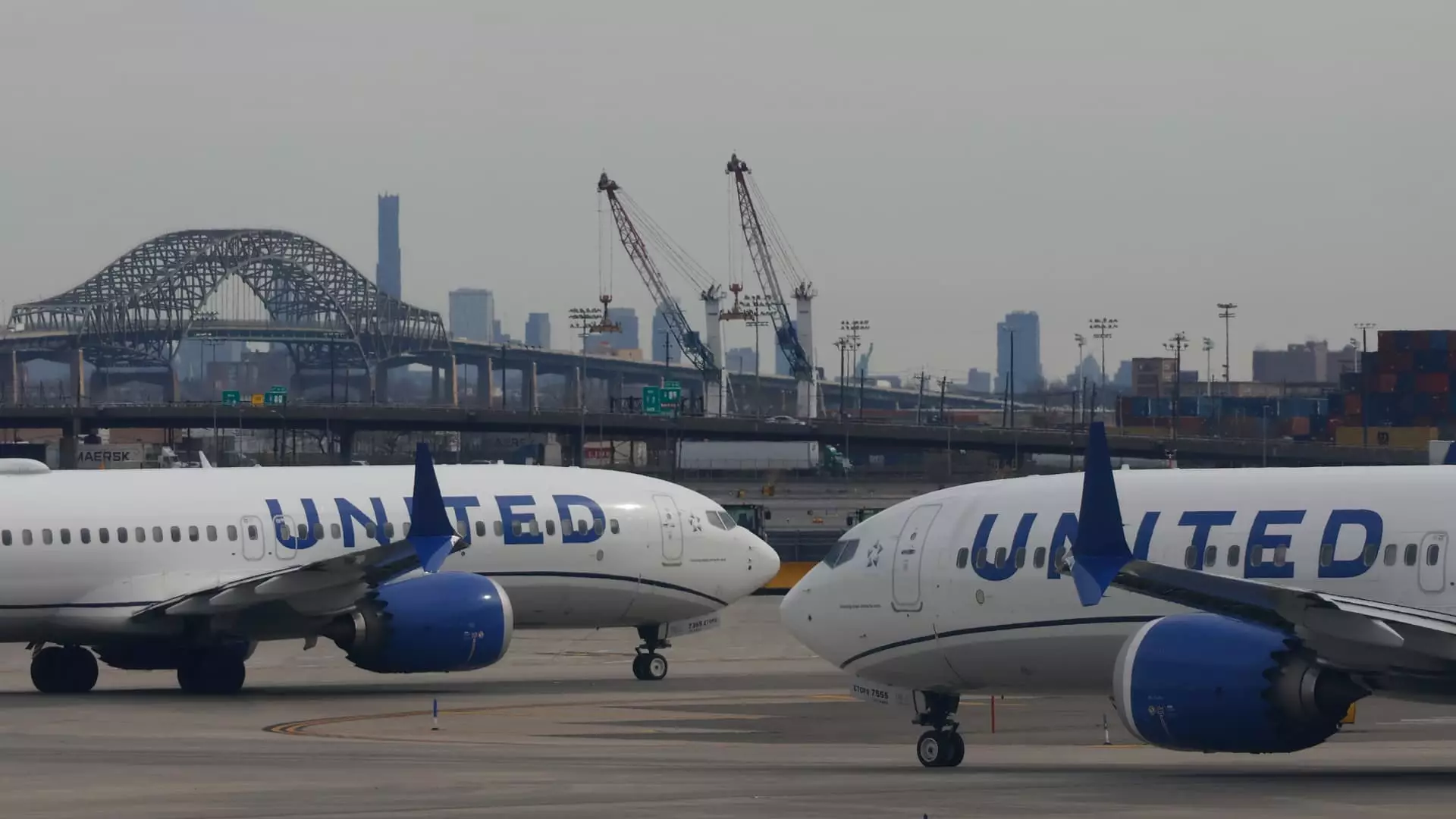In the turbulent world of commercial aviation, passenger inconveniences are often swept aside, but the recent decision by United Airlines to cancel 35 flights a day at Newark Liberty International Airport shines a light on deeper systemic issues. CEO Scott Kirby’s admission that these route reductions constitute about 10% of United’s daily Newark schedule lays bare the challenges facing an already beleaguered air travel industry. While cutting flights may seem like a practical solution to lengthy delays and chaos, it speaks volumes about the shortcomings of our air traffic management system, highlighting a scenario that went beyond the individual grievances of travelers. It’s time we question the sustainability of allowing an industry so pivotal to our economy and personal lives to operate with such glaring inefficiencies.
Blame Game: FAA’s Role in the Chaos
Kirby has pointed fingers at the Federal Aviation Administration (FAA), attributing the crux of the issues to staffing shortages and technological failures. The reality is far more complex; while the FAA is indeed grappling with chronic staffing problems, the mere act of laying the blame at their feet does not absolve United Airlines of its own responsibility. Despite being aware of Newark’s consistently high stress levels and the staffing shortages prevalent in air traffic control for years, the airline continued to operate at capacity. It raises a pivotal question: why did United not take preemptive measures before the situation spiraled into chaos? The impact of overburdened infrastructure on air travel must be recognized, for a flawed system is an inherent risk every airline should acknowledge as they plan.
Voices from the Ground: Customers Left Hanging
Passengers caught in this whirlwind are left grappling with costly delays and abandonment. It’s concerning that around 300 flights saw delays just one afternoon this week, part of a staggering pool of over 1,400 disruptions throughout the week. Many customers rely on air travel for both personal and professional commitments, making such cancellations not merely an inconvenience but a significant interruption in their lives. The impacts of these delays ripple through individuals’ schedules and financial situations—from missed family gatherings to lost business opportunities. The airline’s attempts to waive change fees offer little solace to those who have already invested their time and resources into traveling, indicating a lack of urgency in alleviating customer dissatisfaction.
Staffing Solutions: A Call for Action
Kirby has called for more robust regulatory measures from the FAA, suggesting tighter flight regulations akin to those at other congested airports. This cry for help raises an important point about the need for a coordinated solution. The Transportation Department’s recent incentives to address air traffic controller shortages are steps in the right direction; however, the question of long-term commitment remains. Is this simply a patch to mitigate a dominant systemic failure that has long been neglected? At the same time, the ill-fated decision to move controllers from Newark’s airspace to Philadelphia might have been a short-term fixation on congestion but does not address the more significant concern of workforce sustainability and training in this critical industry.
A Broken System: The Need for Overhaul
This crisis is emblematic of an outdated air traffic control infrastructure struggling under the weight of increased demand. Secretary Sean Duffy has rightly pointed out the need for a new air traffic control system, a call echoed by an industry increasingly aware of its limitations. In a world where technology evolves rapidly, it is paradoxical that our air traffic system has remained stagnant, a relic at odds with the demands of modern air travel. As echoed by Kirby in his statements, dependency on antiquated systems is a disservice to every traveler who expects punctuality and reliability when they hop on a plane.
Immediate technical and managerial responses are required to restore public confidence in air travel. However, the true challenge lies beyond just fixing immediate issues; it involves commitment to a revolutionary overhaul of the very infrastructure that governs our skies. United Airlines, and the aviation sector as a whole, must unite in a comprehensive strategy that not only addresses today’s deficiencies but also paves the way for a more resilient and efficient future in air travel.

